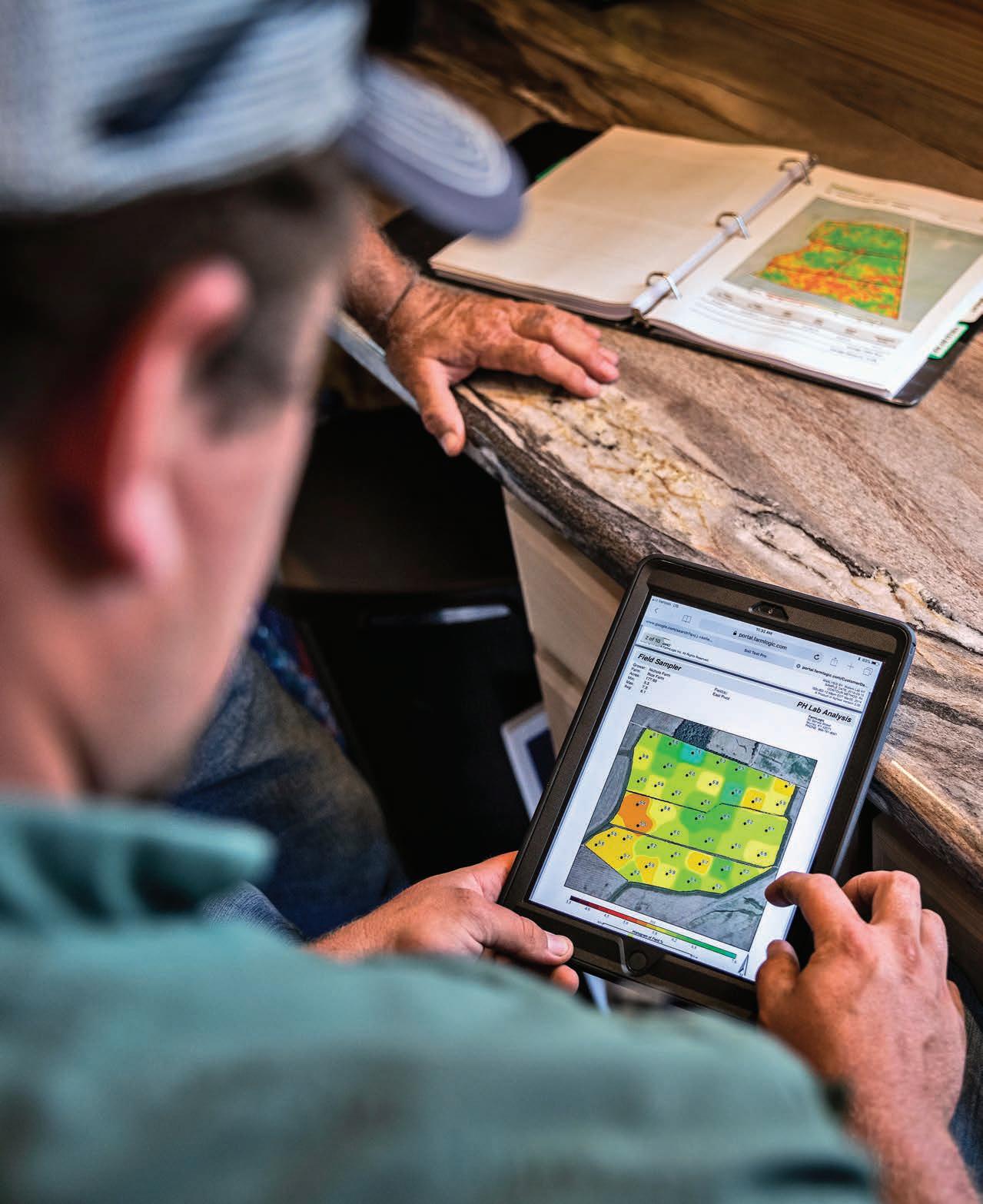






From promoting the profitability of using high-quality soybean meal in India to training animal producers on nutrition in Colombia, the soy checkoff is working behind the scenes to develop more market opportunities for U.S. soy. We’re looking inside the bean, beyond the bushel and around the world to keep preference for U.S. soy strong. And it’s helping make a valuable impact for soybean farmers like you.




See more ways the soy checkoff is maximizing profit opportunities for soybean farmers at unitedsoybean.org


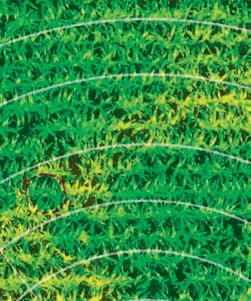
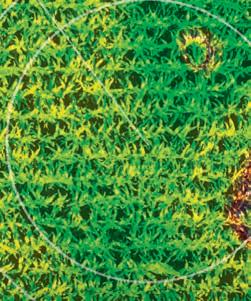

COVER


For agriculture, a dataintensive U.S. industry, slow, unreliable internet is the norm, according to a recent study by the United Soybean Board. Like any business managers in the U.S., farmers rely on internet connections in their offices. However, with today’s technology, they also need connectivity in their fields. American farmers get online for everything from market and weather

and much more. Learn more about this technology gap on pages 15-17.




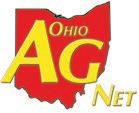


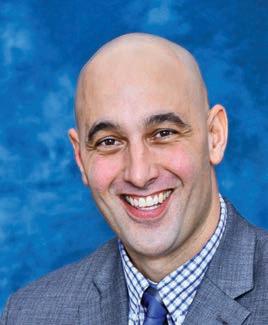
ARyan Rhoades
Ohio Soybean Association President
Marion County soybean farmer
er being elected rst vice president of the Ohio Soybean Association and serving in that position throughout 2019, I’m proud to move into the role of president for 2020. I want to thank my fellow board members for trusting me and giving me the opportunity to lead our organization over the next year. I especially thank our immediate-past president, Scott Metzger, for his leadership.
During the OSA December board meeting, the board elected the other members of the executive committee. Patrick Knou of Shelby County was elected rst vice president and will assume the role of president for 2021. Jennifer Wilson-Oechsle of Van Wert County was elected vice president, Je McKanna of Hancock County was elected Treasurer, and Rusty Goebel of Williams County was elected secretary. Check out page 7 for more information about the new executive committee.
Looking ahead to 2020, our priorities will continue to be trade and water quality.
At the national level, getting the USMCA passed is essential to stabilize those markets for trade. We will also continue to work shoulder to shoulder with the American Soybean Association to lobby for a resolution to the trade dispute with China and a return to free market conditions.
Be sure to read more about the newly formed Ohio Agricultural Conservation Initiative (OACI) on page 5 of this issue. is group represents an unprecedented partnership between agriculture and environmental advocates to make meaningful, realistic progress on water quality. OACI is in the process of creating a certi cation program and will be working very closely with the Ohio Department of Agriculture on implementing H2Ohio programs as those funds become available.
I have always believed in the work that member-driven organizations like OSA do on behalf of our industry. But I also know that sometimes it’s hard to see that value from a distance. at’s why I’m encouraging all members, or those interested in becoming a member, to reach out this winter to your OSA district representative. Chat with them about what OSA is doing for you and how you can get involved. Involvement can simply mean sending an email or making a call to an elected o cial and/or donating a few extra dollars to our PAC. Visit www.soyohio.org/membership to learn more.
ank you for reading the Ohio Soybean News and Happy New Year!

Ryan Rhoades OSA President Marion County
President
Ryan Rhoades, Marion County
First Vice President
Patrick Knou , Shelby County
Vice President
Jennifer Wilson-Oechsle, Van Wert County
Treasurer
Je McKanna, Hancock County
Secretary
Rusty Goebel, Williams County
Chairman
Scott Metzger, Ross County
Trustees
Jerry Bambauer, Auglaize County
Trish Cunningham, Knox County
Bret Davis, Delaware County
Caitlyn Heimerl, Industry A liate Ex-O cio
Je Magyar, Ashtabula County
Derek Reusser, Holmes County
Andy Stickel, Wood County
Kerrick Wilson, Preble County
American Soybean Association
Board Representatives
Jerry Bambauer
Bret Davis
Scott Metzger
Sta Credits
Kirk Merritt - Publisher
Jennifer Coleman - Editor
Courtney Heiser - Contributing Writer
Julia Brown - Contributing Editor/Sta Writer
Brent Warren - Art Director
Barry Falkner - Photo Quality/Proofer
Tony Green - Advertising Production
Ohio Soybean news is published six times a year by the Ohio Soybean Association, 918 Proprietors Rd., Suite A, Worthington, OH 43085. Phone: 614-476-3100. For address corrections contact Ohio Soybean News at 918 Proprietors Rd., Suite A, Worthington, OH 43085.
Web address: www.soyohio.org E-mail: cdeboard@soyohio.org
Comments and statewide news articles should be sent to the above address. Advertising space reservation must be made by the rst of the month preceding publication. In consideration of the acceptance of advertisement, the agency and the advertiser must, in respect of the contents of the advertisement, indemnify and save the publisher harmless against any expense arising from claims or actions against the publisher because of the publication of the content of the advertisement.
For Advertising Sales Contact:
Matt Herman - (612) 812-5833
matt.herman@dtn.com


By Dusty Sonnenberg, CCA
Ohio Governor Mike DeWine unveiled an overview of his new H2Ohio plan for water quality in November in Toledo. Backdropped by the National Museum of the Great Lakes, Governor DeWine presented basic details of the plan to an invited audience of over 100 farmers and legislators, as well as collaborators from farm associations, conservation groups, universities and research centers, agribusinesses, and public and government entities.
“H2Ohio is a dedicated, holistic water quality plan that has long lasting solutions,” said Governor DeWine. “It addresses the causes of the problems and not just the symptoms.”
H2Ohio will invest in targeted solutions to help reduce harmful algal blooms, ensure clean water in disadvantaged communities, and prevent lead contamination in day care centers and schools. In July, the Ohio General Assembly invested $172 million in the plan.
“This is one of the most comprehensive data-driven planning processes in our state’s history. The plan is based on science and on economics,” DeWine said. “It focuses on directing the resources that we have on practices that have been studied and that we know will make a difference because they have already been proven to work. This plan is different because we have put together a broad coalition of agriculture, research, conservation, and environmental interest groups that believe this is the right approach to tackle this problem. It has tangible, measurable changes that will have lasting impacts. It is a comprehensive approach to our statewide water quality problems.”
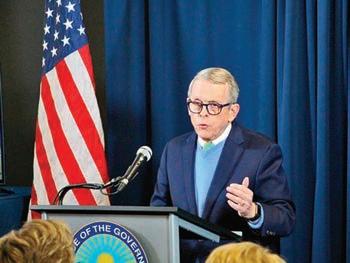
The largest portion of the H2Ohio plan is aimed at phosphorus reduction best practices for farmers.
“Not all phosphorus comes from farms, but most does. Studies show that nutrient runoff accounts for most of the phosphorus load in the Maumee River watershed,” DeWine said. “Ten key practices have been identified as having the best potential to reduce the most phosphorus at the lowest cost. They will give us the most bang for our buck.”
Through a certification process, H2Ohio will provide economic incentives to farmers who develop a nutrient management plan that includes a combination of the best practices. These practices include: 1. Soil Testing, 2. Variable-rate fertilization, 3. Subsurface nutrient application, 4. Manure incorporation, 5. Conservation crop rotation, 6. Cover crops, 7. Drainage water management. 8. Two-stage ditch construction, 9. Edge-of-field buffers, 10. Wetlands.
“H2Ohio will provide an economic incentive to farmers to follow these best practices. It will be done through a certification process whereby farmers will only be eligible for this money if they follow a nutrient management plan,” DeWine said.
The governor said H2Ohio would first be targeted at the Maumee River Watershed in northwest Ohio.
Gov. Mike DeWine announced his H2Ohio plan at the National Museum of the Great Lakes in Toledo in November. One of the plan’s main goals is to reduce phosphorus runo .
Ultimately it will be taken to the rest of the state of Ohio. Farmers in the Maumee River Watershed will be able to enroll in H2Ohio programs for funding incentives in time for spring 2020 planting.
The Ohio Environmental Protection Agency will be monitoring the phosphorus loading in Lake Erie and the Ohio River along with evaluating new technologies that can contribute to these efforts. EPA activities will be focused primarily outside the Maumee River Watershed under H2Ohio. They will be working to protect Ohio’s drinking water and, under the direction of the EPA, H2Ohio will be funding wastewater infrastructure projects in disadvantaged communities. H2Ohio funds will also help to replace hundreds of failing home septic systems for low income households, and H2Ohio will be assessing lead exposure in schools and day care facilities from lead pipes as well.
At the same time, the Ohio Agriculture Conservation Initiative (OACI) will establish a baseline understanding of current conservation and nutrient management efforts on farm fields and build farmer participation in a new certification program in partnership with the DeWine Administration. OACI is an innovative collaboration of agricultural, conservation, environmental and research communities formed in early 2019 to strategically address Ohio’s water quality issues. u


At their December meeting, farmer leaders from the Ohio Soybean Association (OSA) board gathered together to discuss the past year and start planning for 2020.
First, Trish Cunningham, OSA policy committee chair, gave the board an update on pending legislation that could affect soybean farmers. Some of this legislation includes:
Senate Bill 2 – creates the Statewide Watershed Planning and Management Program under the administration of the Director of Agriculture and makes changes to the law governing regional water and sewer districts.
House Bill 7 – creates the H2Ohio Trust Fund for the protection and preservation of Ohio's water quality and the H2Ohio Advisory Council to disburse money from the fund for water quality programs. It also creates the H2Ohio Endowment Board to make recommendations to the Treasurer of State regarding the issuance of securities to pay for costs related to the purposes of the Fund.
House Bill 183 – creates an income tax credit for beginning farmers who attend a financial management program and an income tax credit for individuals or businesses that sell or rent farmland, livestock, buildings, or equipment to beginning farmers. OSA had initially remained neutral on the bill due to a provision prohibiting family-to-family transactions, but an amendment was introduced to make those transactions eligible.
House Bill 400 – authorizes a nonrefundable personal income tax credit of $0.05 per gallon for the retail sale of high-ethanol blend motor fuel, which contains between 15% and 85% ethanol.
Fuel Quality Bill (draft) – Allows
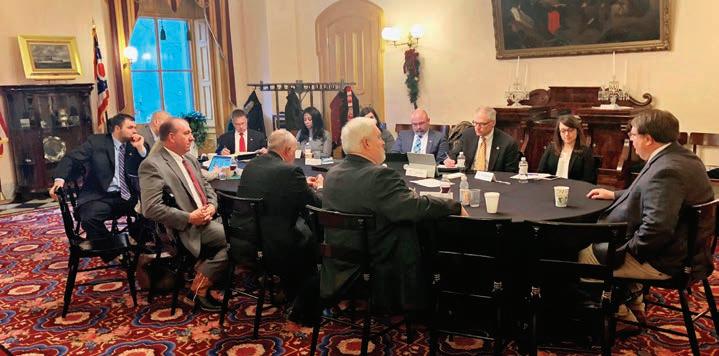
Senate President Larry Obhof (R-Medina) spoke to the OSA board about water quality and trade issues.
county auditors to implement a fuel quality testing program. If ODA ever establishes a statewide fuel quality testing program, that would supersede county programs. This bill is pending introduction with no bill number assigned yet.
Next, the board elected their leadership for 2020 (for more on new board leadership, see page 7). As the immediate-past president, Scott Metzger (Ross County) will serve as the chairman.
President: Ryan Rhoades (Marion County)
First Vice President: Patrick Knouff (Shelby County)
Vice President: Jennifer WilsonOechsle (Van Wert County)
Treasurer: Jeff McKanna (Hancock County)
Secretary: Rusty Goebel (Williams County)
Senate President Larry Obhof (R-Medina) spoke to the group about trade and water quality issues, and Ohio Department of Agriculture
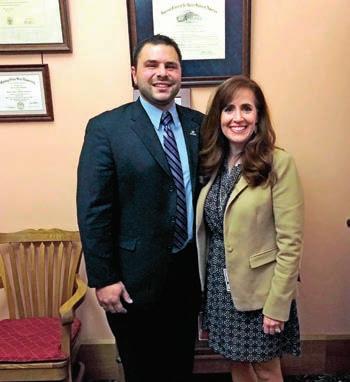
OSA board member Andy Stickel with Senator eresa Gavarone (R-Bowling Green)
Director Dorothy Pelanda spoke about the rollout of Governor DeWine’s H2Ohio program.
In the afternoon, board members broke out into groups and met with several key legislators and their staff including Senator Theresa Gavarone (R-Bowling Green), Representative Jon Cross (R-Kenton), Representative Jim Hoops (R-Napoleon) and Representative Jena Powell (R-Arcanum). u


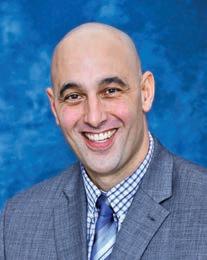

Ryan Rhoades President Patrick Knou First Vice-President
At their December board meeting, the Ohio Soybean Association Board elected new board leadership. Learn a little more about the farmers who will be leading OSA in 2020.
President Ryan Rhoades
Q: What are you most excited for OSA to work on in 2020?
A: There are so many potential answers but I have to go with trade because of the dollars left (or taken off) on the table for farmers in Ohio.
Q: Why is it important for OSA to represent Ohio soybean farmers in Columbus and D.C.?
A: We need to lead the conversation because we live out the decisions made in Columbus and D.C. every single day. There is tremendous gratification seeing impactful legislation happen at the hands of farmers for farmers.
Q. What is your favorite movie?
A: This is a very fluid list but to date I would say Unbroken.
First Vice President Patrick Knouff
Q: What are you most excited for OSA to work on in 2020?
A: Water quality
Q: Why is it important for soybean farmers to become members of OSA?
A: The Ohio Soybean Association tries
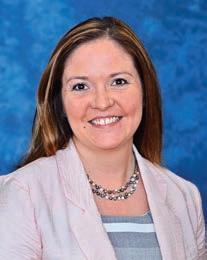
Jennifer Wilson-Oechsle Vice-President
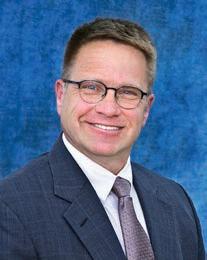
McKanna Treasurer
to look out for all farmers’ best interest.
Q: What is your favorite movie?
A: Top Gun
Vice President Jennifer WilsonOechsle
Q: What are you most excited for OSA to work on in 2020?
A: Trade and H2Ohio
Q: Why is it important for OSA to represent Ohio soybean farmers in Columbus and D.C.?
A: Someone once asked me why I traveled to D.C. to meet with our representatives, asking "does it really matter?” My response is simple — yes. Having farmer members from OSA meet with our elected officials in D.C. and Columbus keeps agriculture at the forefront in decision making.
Q: What is your favorite movie?
A: Lion King
Treasurer Jeff McKanna
Q: What are you most excited for OSA to work on in 2020?
A: Trade!
Q: Why did you decide to get involved in OSA to begin with?
A: I believe that it is important to promote the soybean products that farmers produce. OSA is a powerful means to do just that.
Q: Why is it important for OSA to represent Ohio soybean farmers in
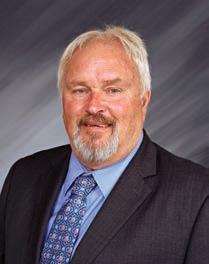
Goebel Secretary
Columbus and D.C.?
A: It is imperative that our government leaders understand the challenges and opportunities soybean farmers encounter.
Q: What is your favorite movie?
A: Castaway
Secretary Rusty Goebel
Q: What are you most excited for OSA to work on in 2020?
A: Water quality is one of the most important issues OSA will continue to work on in Ohio in 2020.
Q: Why did you decide to get involved in OSA to begin with?
A: I enjoy helping with important issues that impact soybean farmers. It is critical for farmers to be involved in decision making so legislators write laws that are usable and based on fact.
Q: Why is it important for soybean farmers to become members of OSA?
A: Many farmers are not aware of the many things OSA does. In 2019, OSA supported legislation for water quality, opposed tariffs on soybean exports, advocated for a stronger Renewable Fuel Standard, supported passage of USMCA and mobilized members to set the record straight in Toledo on agriculture.
Q: What is your favorite movie?
A: Blazing Saddles u





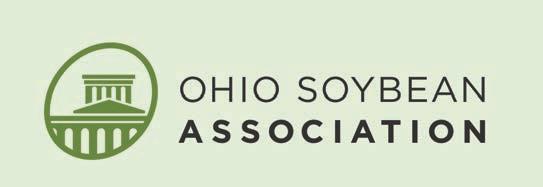






$200SoybeanSeedCoupon
BiodieselBucks
NDVISatelliteImaging
OSAMemberPin
SoybeanKeychain
LimitedEditionSoybeanSticker
EligibletoWin$1,000Parts&Service CreditfromOhioAgEquipment
25%offRetailofaRoofMaxxProduct
SubscriptiontoOhioCountry Journal/OhioAgNet&TheProgressive Farmer
SubscriptiontoOhioSoybeanNews
AmericanSoybeanAssociationBenefits
ProfessionalDevelopmentConnections &Opportunities
RepresentationattheStatehouse&on CapitolHill































Whether shipping by river, road or rail, the soy checkoff is committed to ensuring America’s infrastructure is a significant advantage for U.S. soybean farmers. We’re looking inside the bean, beyond the bushel and around the world to keep preference for U.S. soy strong. And it’s helping make a valuable impact for soybean farmers like you.
See more ways the soy checkoff is maximizing profit opportunities for soybean farmers at unitedsoybean.org


For an unusual year that included unprecedented weather and continuing trade issues, the 2019 Ohio Grain Farmers Symposium attempted to capture the challenges that farmers faced in the last 12 months and provide information that will help farmers prepare for 2020.
Ohio Department of Agriculture (ODA) Director Dorothy Pelanda opened the meeting with remarks about what is coming down the pipeline at ODA.
“We have an obligation to think about future generations and doing what’s right for those future generations,” Pelanda said. She specifically spoke about the H2Ohio program and how it will work with the unprecedented partnership between agriculture and environmental groups known as the Ohio Agriculture Conservation Initiative (OACI), saying “We know that moving forward requires every one of us pulling together in one direction to make a difference.”
Dr. Cathann Kress, vice president for agricultural administration and dean of the College of Food, Agricultural, and Environmental Sciences (CFAES) at The Ohio State University, gave an update on
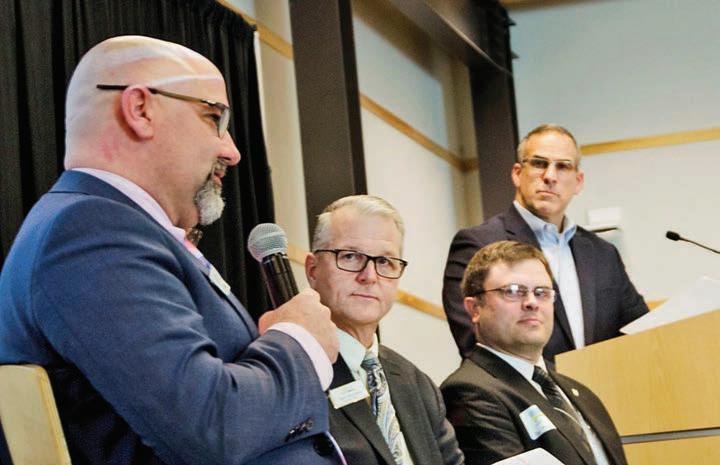
CFAES and how the college continues to improve agriculture. Rounding out the morning’s speakers was Ben Brown, OSU Farm Management Program Manager, who covered a wide array of topics about the current farm economy and the outlook moving forward.
“Maybe the best thing that happened nationally to balance sheets for corn and soybeans was that we had a production shortfall. We would have loved for this production shortfall to happen somewhere else in the world, but it did help bring prices back to levels that made cash flow a little more palatable,” Brown said.
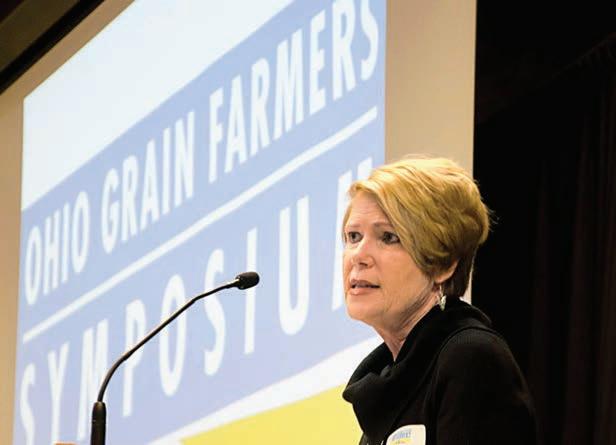
ODA Director Dorothy Pelanda addresses symposium attendees. She focused on H2Ohio and the role commodity groups will play in the continuing e ort to protect water quality.
The rest of the symposium focused heavily on helping farmers to prepare for 2020, with sessions about 2020 trade and policy outlooks, weather, the Ohio Agriculture Conservation Initiative and the Renewable Fuel Standard. If you were unable to attend the symposium, presentations can be found at ohiograinfarmerssymposium.org
A panel featuring leadership from the Ohio Corn & Wheat Growers Association (OCWGA) and Ohio Soybean Association (OSA) discussed trade, including USMCA, water quality and what both organizations are prioritizing for 2020. OCWGA and OSA both held their annual meetings at the symposium as well, including electing Board of Trustees members. OSA re-elected Andy Stickel of Wood County to represent District 2, Patrick Knouff of Shelby County to represent District 7 and Ryan Rhoades of Marion County to represent District 9. u





•
•
•








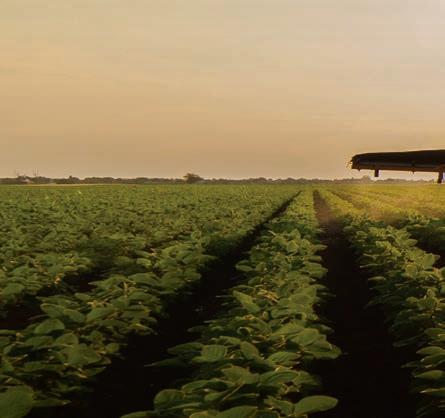










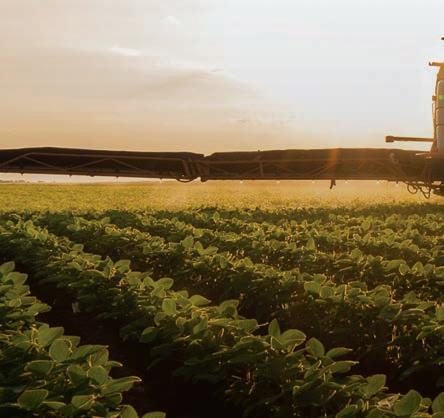


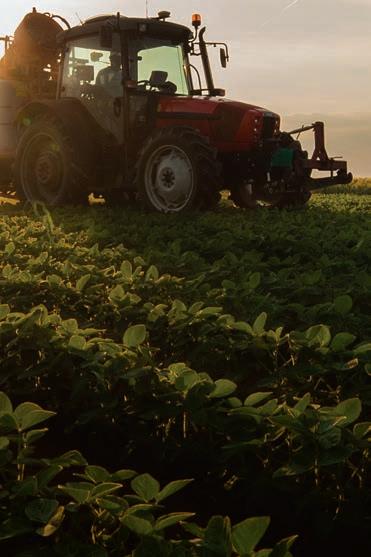





Doane Advisory Services’ recently updated International Report includes ten-year forecasts for soybeans, coarse grains, corn, wheat, cotton, and rice for 17 countries or major regions that encompass the world.
e report distills and conveys big-picture trends found in the global data on a semiannual basis.
African Swine Fever (ASF) is greatly accelerating a major transformation in the world hog industry. Backyard operations hog operations have limitations concerning the operator’s ability to limit environmental damage and control health problems. e challenge for developing countries is how to implement policies that encourage construction of world-class hog operations while realizing the policies will bankrupt small hog operations that employ a signi cant number of people.
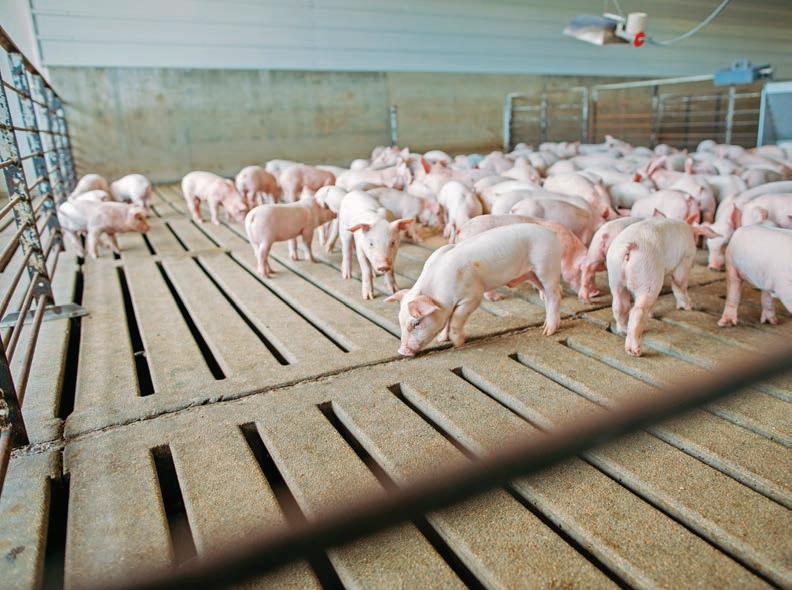
trying to contain its outbreak near the North Korea border.
According to China’s Agriculture Ministry, ASF has reduced the market hog population by 42%, and several organizations are forecasting that 50% of China’s hog herd will be eliminated. Chinese o cials suggest the swine industry is nally controlling the disease, which means the earliest that China’s swine industry could expand is the fourth quarter of 2020. e fact that ASF has no cure and no vaccine and tends to persist in infected areas implies recurrent issues anywhere it has previously broken out. In addition, the latest reports indicate ASF is continuing to spread in Eastern Europe. It has shown up in both North and South Korea and seems destined to cover Southeast Asia and probably India. South Korea has been very aggressive in
China’s meat sector has responded by importing more meat and investing heavily in poultry operations to o set some of the lost pork production. Chinese government o cials have reported they will invest heavily in world-class hog operations that will quickly bring production back online. e ability of hogs to reproduce makes this very easy to do from a biological standpoint. From a nancial standpoint, investing in a hog barn with a fully operational sow breeding operation is very risky without a vaccine for ASF. Doane believes a widespread available vaccine is two years away.
Long-term, ASF should be positive for grain and vegetable meal consumption. World-class hog operations feed precise diets that require quality feed ingredients. For example, a er the piglet is weaned, it is
crucial that high levels of amino acids are maintained in the diet to allow the pig to achieve its genetic potential for lean growth. Of course, high amino acid levels are a major feed ingredient advantage for soybean meal. Replacing backyard small operations with commercial operations will increase consumption of grains and vegetable meals. Also, the increase in commercial chicken production is forecast to continue to increase. e switch from backyard to commercial meat production is very bene cial to grain and vegetable meal consumption. u
This article originally appeared on USSoy.org, a website created by the U.S. Soybean Export Council for consumers, customers, and stakeholders of U.S. Soy to learn more about the U.S. Soy Advantage. Information provided on the site relates to the nutrition, sustainability, supply, trade, innovation, and industry of U.S. Soy.


U.S. soybean farmers depend on the internet to be successful in their operations, just like any business. Unlike other businesses, farmers need access to the internet from a wide range of places throughout the day. While some hours are spent at a desk, others may be in a truck on a rural highway or a tractor in the field.
For farmers and others living in rural areas, broadband connectivity both in their offices and out in their fields is crucial to making sound business decisions. According to a new study commissioned by the soy checkoff, “Rural Broadband and the American Farmer,” approximately 60 percent of farmers and ranchers in the United States do not feel they have adequate internet connectivity to run their businesses. Because 78 percent of farmers lack internet provider options, they cannot change providers to get faster connectivity.
Additionally, a report released by the U.S. Department of Agriculture, “Farm Computer Usage and Ownership (August 2017),” states 29 percent of U.S. farms have no internet access at all.
U.S. soybean farmers need strong, reliable connectivity. Innovations, specifically field technology such as autosteer, drones and sensors, require broadband connections. These tools improve farmers’ and ranchers’ precision and efficiency. Reliable connectivity paired with these technologies allow operations to use less fuel, water and pesticides, improving sustainability and creating overall better quality for how farmers run their operations.
“Broadband access is critical,” says Philip Good, soybean farmer-leader from Macon, Mississippi. “It affects everything from our irrigation systems, moisture sensors, combines and feeding and, in


According to a study by the United Soybean Board, 60 percent of U.S. farmers don’t have enough connectivity to run their business.



the office, access to market information, emails and instructional videos. It impacts every aspect of our business.”
Unreliable broadband connection leaves farmers with missed opportunities, unable to realize the full potential of their technology while out in the field.
Farmers like Good want to adopt new practices and applications to become more sustainable. Now farmers can monitor how different soils behave throughout the growing season via an app. They can also calculate pesticide rates to protect crops and minimize impact.
A lack of connectivity prevents the implementation of these practices for many farmers. Over half plan to incorporate more data into their operations to make better decisions. But slow internet speed, high costs and unreliable connections are barriers to having that data. Only 19 percent of the farmers from the USB survey rated their internet in the field as fast enough to transfer data effectively. And 67 percent of farmers believe that it is at least moderately important from the field.
Even though the farmer feels the repercussions of slow internet connectivity, so does their community, the agriculture sector and the U.S. economy.
Farming contributes nearly $133 billion of the U.S. gross domestic product, and farms that run on limited internet connections contribute nearly
$80 billion to GDP. Farmers know the challenges all too well. Good says the lack of rural broadband in his area impedes his business.
It’s not just the farmers’ businesses. The lack of rural internet impacts $13 billion in annual farm equipment purchases. According to the checkoff survey, nearly one-third of farmers said connectivity had impacted their purchase decisions to upgrade farm equipment. New farm equipment includes extensive technology, but if farmers don’t have the connectivity to use it, it’s an upgrade that doesn’t always recoup the investment.
R.J. Karney, director of congressional relations and broadband specialist with the American Farm Bureau, says, “Broadband is no longer a luxury. It’s a necessity.” Karney encourages farmers to talk about the impact the lack of broadband access has on their operations and their communities.
Internet connectivity is a lifeline for U.S. soybean farmers. Farmers utilize the internet as much as any business. If they’re in the tractor in their field, they certainly don’t want to go miles to the shop to look something up. Farmers should have the same access to broadband connection in their office or in their fields. Strong connectivity gives farmers the opportunity to reinvest in their businesses and run them to full potential, benefiting them, their community and, ultimately, the U.S. economy. u



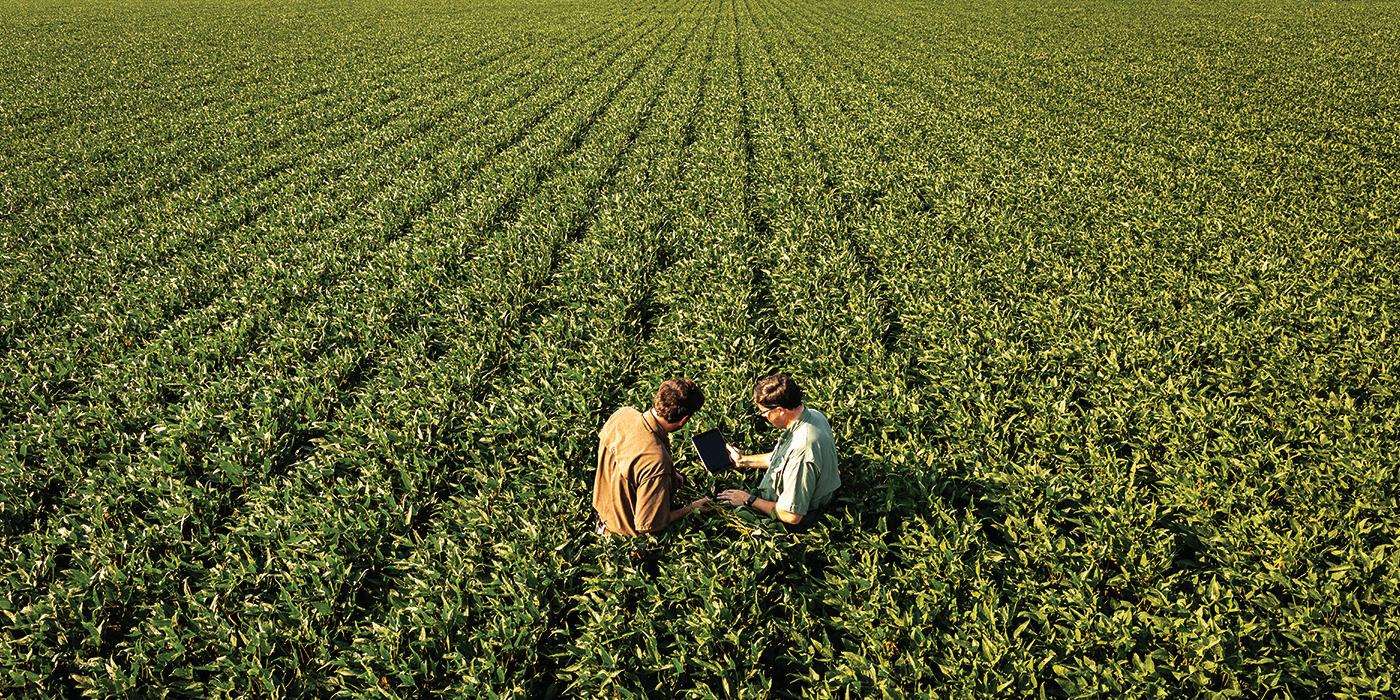














































Equipment monitors, in-field sensors, product tracking, transactions, apps and drones — it takes a lot of data to help farmers run their business and grow better food. Unfortunately, 60% of farms in the Great Lakes region — including Ohio — lack the internet access to do it right. But we can change that if we broadband together. Share the facts about how the lack of rural broadband affects our economy and everyday lives.
LACK OF RURAL BROADBAND AFFECTS OUR REGIONAL ECONOMY AND NATIONAL ECONOMY
$13 BILLION IN ANNUAL U.S. FARM EQUIPMENT PURCHASES ARE IMPACTED BY LACK OF RURAL INTERNET
28% OF FARMERS SAY LACK OF INTERNET HAS AFFECTED THEIR EQUIPMENT PURCHASES
60% OF FARMERS REPORT SLOW INTERNET SPEEDS
$80 BILLION OF U.S. GDP RUNS ON LITTLE TO NO INTERNET
60% OF FARMERS DON’T HAVE ENOUGH CONNECTIVITY TO RUN THEIR BUSINESS
68% OF FARMERS DON’T HAVE ADEQUATE CONNECTIVITY IN THE FIELD
80% OF GREAT LAKES REGION FARMERS DON’T HAVE A CHOICE IN OFFICE INTERNET SERVICE PROVIDERS
I’ve stayed in the dark age of connectivity because of the cost.
My internet access is too slow. Some days it doesn’t exist.
We experience many internet issues, and we have no options for service providers.
1.5MB speed is too slow, and our data cap is unrealistic.
56% OF FARMERS IN AND AROUND OHIO WANT TO INCORPORATE MORE DATA IN THEIR OPERATIONS
I’m unable to upload documents or pictures.
My connectivity is only sufficient because I’m not using much data.
It takes full days sometimes to move even a few gigabytes of data. It’s time to start improving quickly.
Get more facts, download the entire report and get involved: unitedsoybean.org/ruralbroadband







By Dusty Sonnenberg, CCA, Field Leader
Aer a challenging 2019, four speci c weeds should be on every farmer’s radar for 2020: waterhemp, Palmer amaranth, giant ragweed and marestail.
Waterhemp and Palmer amaranth
In terms of waterhemp, there was signi cant seed production potential in 2019.
“I have seen an increase in waterhemp in 2019, especially with all the prevent plant acres, and that is going to mean big problems for some farmers in 2020,” said Kenny Schilling, retail market manager for FMC Corporation. “If you know you are going to have waterhemp issues in the 2020 soybean crop, a farmer needs to plan on using a dicamba or Liberty soybean in that eld.
“It is recommended to use a Group 14 and Group 15 Family herbicide in the pre-emerge application and follow it up with a Group 15 Family herbicide again in the post-emerge application, combined with the chemistry from the herbicide resistant soybean that was planted. Most farmers are using either a Group 14 or Group 15, but they really need to use a herbicide from both groups.”
Farmers need to catch waterhemp early.
“Farmers need to learn to treat the seed, not the weed,” Shilling said. “Ideally we need to stop it before it germinates. Waterhemp will grow 1.25 inches each day a er it germinates. To be e ective, we really need to get it before it gets to the 6- to 8-inch range. At that point it is just too big and becomes very di cult to control. ere are basically 5 days from the time waterhemp germinates until it is a problem, so an application needs to be made before day 5.”
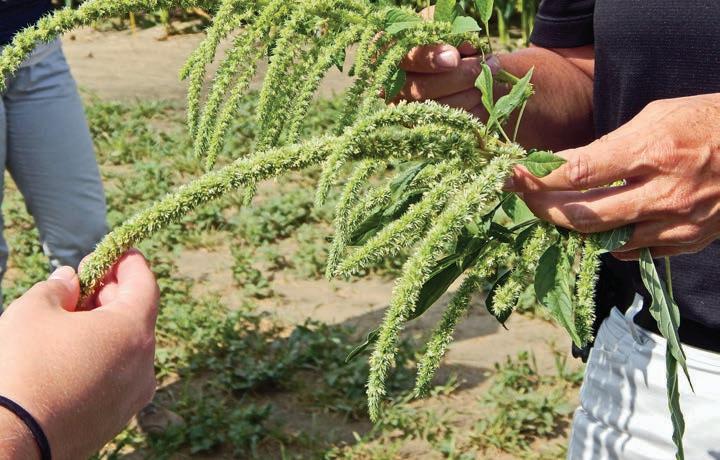
Schneider, business representative for BASF concurs with Shilling’s concern. Schneider wants farmers to assess their waterhemp going to seed to be based on how much seed was produced on the acres that were uncontrolled in 2019.
“ is is a real issue that needs to have special attention in 2020 if a farmer nds it spread into their eld in 2019.
Waterhemp is known for its proli c seed production and having a very small, light seed that can easily be spread by the wind. It is a fast grower, and it produces seed throughout the summer,” Schneider said.
Schneider recommends that if a farmer has waterhemp that went to seed, they should plan to go a er it with an early spring burndown application or early post-emerge application.
“ e farmer will need to have their weapons fully loaded to tackle this weed in 2020,” Schneider said.
Schilling recommends herbicide resistant soybeans when battling tough weeds.
“Farmers should plan on planting a dicamba bean if they know they have a problem. If they have concerns about
One Palmer amaranth plant is capable of producing 250,000 to 500,000 seeds. It also germinates the entire growing season from early May until mid-August.
the risk of the dicamba products, then a Liberty resistant soybean or an Enlist bean (resistant to 2,4-D or glyphosate), and Liberty (glufosinate) should be selected to give the most options for in season control.”
Waterhemp is similar to Palmer amaranth in that it is a proli c seed producer. One Palmer amaranth plant is capable of producing 250,000 to 500,000 seeds. It also germinates the entire growing season from early May until mid-August.
“Farmers really need to layer another residual with the post emerge pass for control of these weeds,” Schneider said.
Neil Badenhop, sales representative for Valent USA, is concerned that waterhemp may have gotten established and gone to seed in either unplanted or untreated fields this past summer. The farmers may not realize the potential problem they have on their hands.
“Proper identi cation of the weed problem is the rst step. Farmers may misidentify waterhemp, thinking it is common lambsquarters,” Badenhop said. “ e two weeds look very similar if you do not know what you’re looking for.”
Not all residual herbicides are created equal. A farmer needs to study the Ohio, Indiana and Illinois Weed Control Guide, and evaluate differences in residual herbicides. Different herbicides work better on different weed complexes. Farmers need to purchase an effective herbicide based on individual weed populations.
Some farmers may be lulled into a false sense of security with their “standard” chemistry program. Along with waterhemp, giant ragweed has become a greater concern and creates real challenges in management, Shilling said.
“ e problem is if a farmer has both waterhemp and giant ragweed issues, the products that are good on waterhemp are not as good on giant ragweed,” Shilling said. “If there are giant ragweed concerns, a farmer should look at products in the Group 2 Family that contain First Rate or Classic.”
Schneider feels that to effectively battle giant ragweed, both a pre-emerge and post-emerge application strategy are necessary.
“Giant ragweed has a large seed and has a later germination than other weeds, so it causes issues for a preemerge application alone without a good post-emerge application to follow-up. Liberty and Engenia are both good options to add to either a pre- or postapplication on the respective traited soybeans, and they are both also good on marestail,” Schneider said.
Marestail
Glyphosate resistant marestail continues to be a problem in elds that have not
seen an adjustment in the herbicide program to address the issue.
For farmers with multiple herbicide resistant weed species present, a dicamba resistant soybean is recommended. Dicamba-resistant soybeans, regardless of the company and speci c product (Engenia, Xtendimax and FeXapan) are labeled to have the product applied either pre-plant, preemerge, or post-emerge. e chemistries have been formulated to reduce the volatility and risk of inversion and o -site movement.
Badenhop has been very impressed with the reformulations and less volatility now compared to his prior experience with the original formulation of dicamba and o target movement risk.
“I thought there would be a lot more issues. e new technology has really lowered the vulnerability and risk.
e companies have done a great job,” Badenhop said. “Most complaints seem to be a result of a misapplication from the label directions. As a result, more restrictions continue to be placed on the use of the products in other states.”
Valent USA does not have a dicamba product on the market. Engenia is the BASF dicamba product.
Schneider said the companies that manufacture the dicamba product o er required training for farmers intending to apply it in the 2020 growing season.
“ e product label requires dicamba training for anyone who will be applying the dicamba product in 2020,” Schneider said. “ is is a two-year label approved by the U.S. EPA. Individual states can have additional stipulations. Ohio has elected to stay with the federal label.” u
This article originally appeared on OhioFieldLeader.com. Field Leader is the Ohio Soybean Council and soybean checkoff’s online resource to give farmers access to the latest soybean checkoff research and water quality information to enhance their operations.
Glyphosate resistant marestail continues to be a problem in fields that have not seen an adjustment in the herbicide program to address the issue.
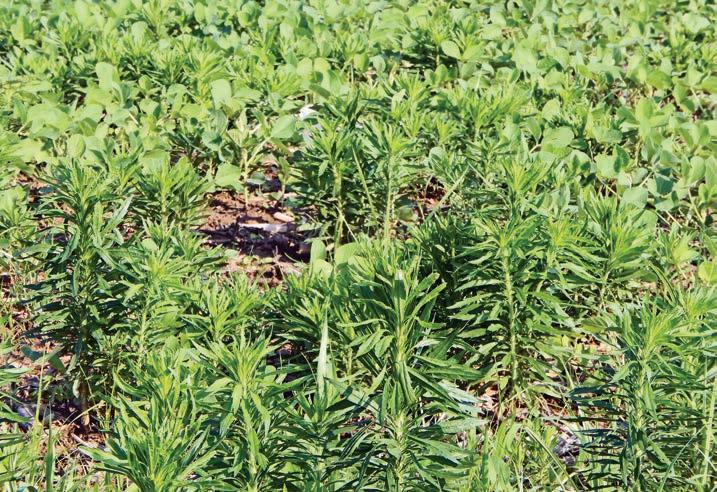


By Courtney Heiser
Aflood of emotions filled the Lucas Oil Stadium as the lights dimmed and a sea of blue cheered during the final session of the 92nd National FFA Convention and Expo in Indianapolis. Twenty-five candidates nervously anticipated the moment they would hear their name called to serve on the 2019–20 National FFA Organization officer team.
After the election of four regional vice presidents and the national secretary, 20 candidates remained, including Kolesen McCoy, of Springfield, Ohio, intently listening to who would be elected to serve as the organization’s national president.
McCoy patiently awaited his fate. It was now or never, all or nothing and then it happened. “Your 20192020 National FFA president, from the state of Ohio: Kolesen McCoy,” was called out from the podium and McCoy became the third Ohioan in history to serve as the National FFA Organization’s president.
McCoy followed an unconventional path to obtain this leadership position, but his experiences with the Global Impact STEM Academy (GISA) and GrowNextGen (GNG) have cultivated his abilities and shaped him into the young agricultural professional he is today.
Early in his high school career at the GISA, McCoy was approached by his agricultural education teacher with an offer to be a part of an initiative to start an FFA chapter. McCoy was struck with curiosity, as, prior to this opportunity, he had never heard of the National FFA Organization.
“The unique pathway in leadership, personal growth, and the potential careers set before me sparked a passion
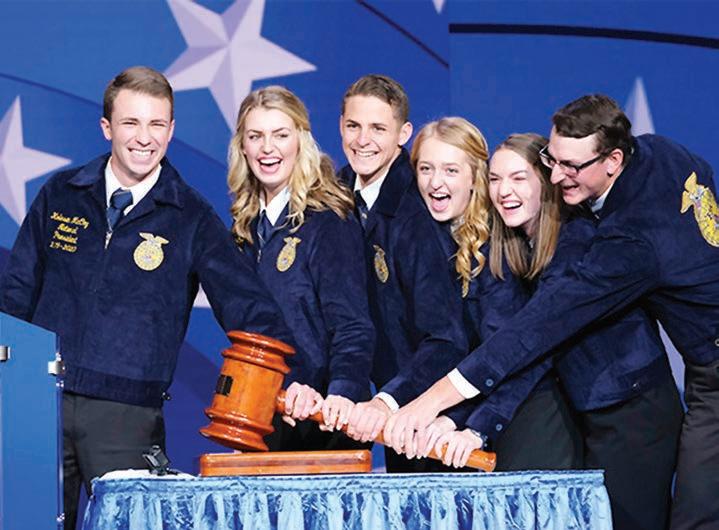
that has stayed with me ever since,” McCoy said.
In cooperation with GISA, the GNG program, funded by the Ohio Soybean Council and soybean checkoff, has been dedicated to providing opportunities to grow the next generation of entrepreneurs and leaders for the everchanging industry that feeds the world.
“Kolesen’s willingness to try new opportunities presented to him is one attribute that has stood out to me as he has developed as a young leader,” said Rachel Sanders, FFA Advisor at GISA and a teacher leader for the GNG program.
In addition to McCoy’s notable contributions to GISA’s young FFA chapter, he also served as a high school ambassador for the GNG program. As an ambassador, McCoy showcased how agriculture is a STEM-related field by helping run bio-based STEM outreach events at local elementary schools and the Clark County Fair. He also conducted activities at the GNG Booth during State FFA Convention.
Kolesen McCoy was elected to serve as the 2019–20 National FFA President. The Springfield native is shown here with his officer team at the National FFA Conference.
“The first trip I ever took to Farm Science Review in London, Ohio, was sponsored by GrowNextGen,” said McCoy. “It was the small but very impactful moments like these where I saw GrowNextGen invest in myself as a young agriculturist that have stood out.”
Growing up, McCoy spent time on his grandparents’ farm in northwest Ohio. He learned about machinery and common practices of a corn and soybean operation, but his immediate household was not involved in production agriculture.
“GrowNextGen served as a great vehicle for myself to become involved in the reality of agriculture in the 21st century,” said McCoy. “Becoming
involved in the mission to feed the world and invest into the communities around us has completely reshaped not just my personal outlook, but my professional outlook as well.”
As McCoy became more involved with his studies of agriculture at GISA and his experiences with GrowNextGen, he connected the dots and realized his potential to make a positive impact within the agriculture industry.
“The GrowNextGen program is set apart in its focus on student success through educational outreach and resources,” said McCoy. “The practicality of its mission to grow the next generation of entrepreneurs and leaders for the changing industry of agriculture will always be present as our world grows. Every resource and initiative created is done so with the intention to fulfill the mission, and GrowNextGen delivers.”
“Kolesen’s aspiration for new opportunities led him to new adventures that allowed him to reflect and discover his purpose,” said Sanders.
In 2017, McCoy was elected to serve as the Ohio FFA state secretary. Throughout his year of service as state secretary, he was exposed to many opportunities and experiences which enhanced his leadership abilities and passion for agriculture and serving others.
Building upon his involvement with GNG, his impact on Ohio FFA as state secretary led to his election as the 2018–19 Ohio FFA state president and now the current National FFA president.
“What makes this organization what it is, is the people involved,” said McCoy. “The classmates beside you, the agricultural educator behind you, and the supporters all around you encouraging you every step of the way. I genuinely am thrilled to be able to be an authentic advocate for the agricultural industry, a voice for our student body at the national level, and a kind friend to all both in and out of the blue jacket.”
“Kolesen is a very genuine young man who serves for the greater good,” said Sanders. “He truly has a positive outlook on life and will make the most out of any opportunity.”
In a short three years of service to both the Ohio FFA and National FFA Organizations, McCoy has humbly left a legacy and continues to make an impact as a leader in agriculture. Through his many opportunities to serve others, McCoy has made it a priority to grow with every new experience.
McCoy also represented Ohio in the 2019 American Soybean Association Ag Voices of the Future Program. This program is designed to expose young people with a farming connection to an education on major policy issues and advocacy.
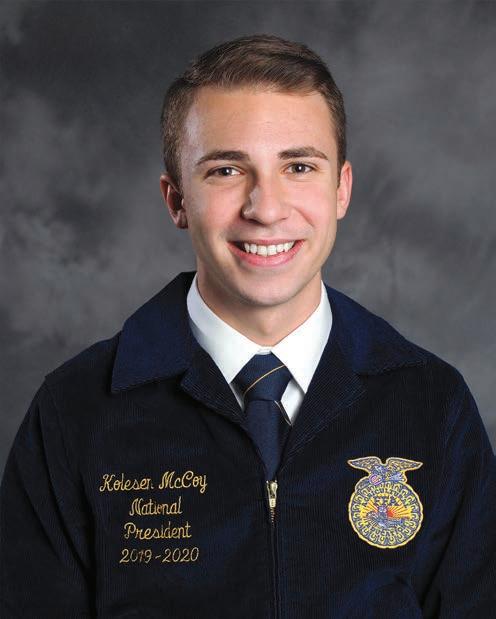
“Ultimately, what makes the greatest impact is when you seek to serve and learn from the people around you,” said McCoy. “Learning this was what catapulted my growth as a leader.”
“It was because of the programs like GrowNextGen that I became more invested in the industry of agriculture, further influencing my decision to pursue both a degree and career in agribusiness,” said McCoy.
As a second-year agribusiness student in the College of Food, Agricultural, and Environmental Science at The Ohio State University, McCoy looks forward to pursuing a career that is connected to his passion of working with people and the agriculture industry. He is interested in agribusiness management, international trade and
policy, organizational leadership, public relations and education.
“Through the intentional growth of my professional network sought after in these experiences, I hope to be a sound advocate and contributor to the agricultural industry and those in the rural community,” said McCoy. “Genuinely, I can say my experience with GNG served as a catalyst for opening my eyes to the incredible diversity and unity within the agricultural industry.”
GrowNextGen is the Ohio Soybean Council’s checkoff-funded program that brings agriculture science to the classroom by providing real-world educational tools to engage the next generation workforce. GrowNextGen helps expose students to different career fields in a thriving industry. To learn more about this program and other ways GNG is preparing the next generation for careers in agriculture, visit grownextgen.org. u


The Ohio Soybean Council

(OSC) has won its eleventh R&D 100 Award in partnership with Persistence Data Mining, Inc. (PDMI) for a revolutionary soil nutrient mapping and testing platform. The PDMI hyperspectral imaging technology, Soilytics™, dramatically improves the efficiency of the soil testing process by eliminating chemical lab tests, making it faster and more cost-effective. It also provides farmers actionable data that will help improve both profitability and environmental stewardship.
OSC and PDMI accepted the joint award during the 2019 R&D 100 Awards Banquet last week in San Francisco, California.
“We are grateful to be included with such an esteemed group of researchers
and scientists. We are excited to represent AgTech for this award with a solution that helps farmers, feed people and protect our environment,” said Penny Nagel, PDMI Chief Operating Officer.
Hyperspectral images are taken of fields and uploaded directly to labs for testing. It eliminates time at the field, shipping costs and delays, and will provide quicker results to companies and farmers.
A number of large companies have tried to figure out how to make this work in the past without much success. The problem was finding the right algorithms necessary to extract the relevant digital signatures of nutrients. Thanks to support from OSC and other forwardthinking partners, PDMI cracked the code that can identify OM, soil type, moisture, nitrogen, phosphorus, and
Bill Bayliss of Logan County has been appointed by U.S. Department of Agriculture
Secretary Sonny Perdue to serve on the United Soybean Board (USB). USB manages the national soybean checkoff which was created by the Soybean Promotion, Research, and Information Act. The board is composed of 73 members representing 29 states and Eastern and Western regions. The newly appointed farmer-leaders were sworn in as
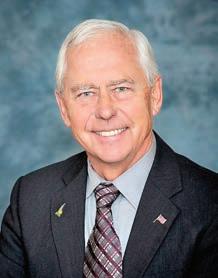
directors at the USB annual meeting in St. Louis in early December.
“I’m thrilled to see Bill appointed to USB and have the opportunity to represent all U.S. soybean farmers,” said Bill Bateson, Ohio Soybean Council (OSC) Chairman and Hancock County soybean farmer. “Bill has been a longtime proponent of the soybean industry, and now he will be able to take that passion to the national level.”
Bayliss is a first generation farmer who serves on the Ohio Soybean Council Board of Trustees, and was recently elected to serve as the organization’s treasurer. He previously served as Executive Director of the Farm Service Agency of Miami County, president of the Logan County Sheep
potassium, CEC, calcium, magnesium and other micronutrients at a high level of confidence that might prove to be more accurate than traditional methods.
“Farmers need more precise, real-time, soil nutrient mapping,” said Bill Bateson, OSC chairman and farmer from Hancock County. “This type of technology can help us better manage input costs without loss of productivity, as well as protect water and soil quality. I’m really excited to see where this technology goes and proud that the Ohio Soybean Council and soybean checkoff is a part of it.”
PDMI is currently working to get this new technology in the hands of Agronomic Service Providers, as well as developing partnerships with large equipment manufacturers and digital platform companies to move Soilytics into all areas of the precision agriculture market. u
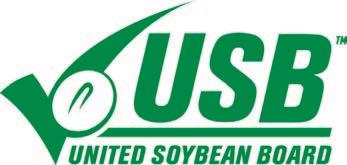
Improvement Association, and Chair of the National Soy Aquaculture Alliance Board of Trustees.
“I’m excited to get started on the board,” Bayliss said. “I’ve always enjoyed working on the state soybean board, and I’ve seen the impact that national organizations can have through my work with the Soy Aquaculture Alliance and the U.S. Soybean Export Council. I’m looking forward to seeing all the ways that checkoff dollars can positively impact the industry for farmers across the country.”
Bayliss replaces retiring USB director Keith Kemp. Kemp joined USB in 2010. Learn more about him on page 23. u


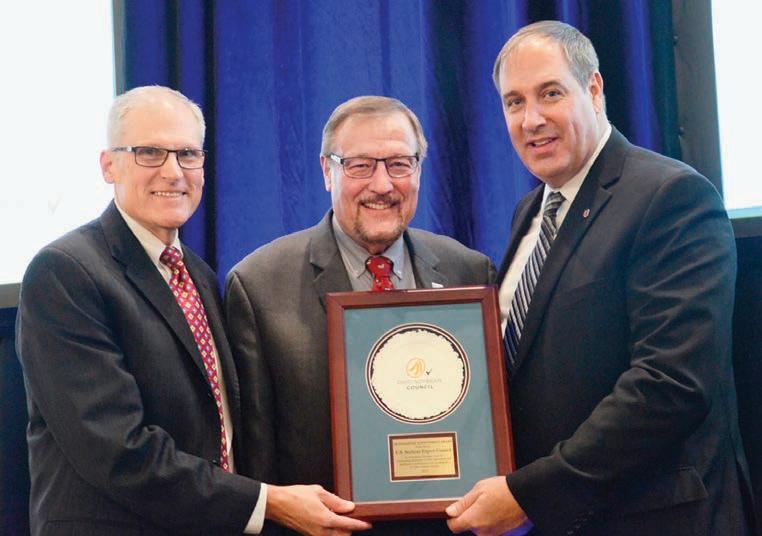
After a challenging growing season for farmers across the state, the 2019 Industry Dinner celebrated the efforts of both the Ohio Soybean Council (OSC) and Ohio Soybean Association (OSA) to better the soybean industry. This year, OSC honored the U.S. Soybean Export Council (USSEC) with the Outstanding Achievement Award for their dedication to creating a preference for U.S. soy by building and maintaining relationships across the globe.
Ed Beaman, senior director of basic market assessment and non-traditional funding at USSEC, accepted the award on behalf of the organization. He shared the strategy that USSEC uses when trying to create and expand markets for U.S. soybeans.
Beaman told attendees that building new markets is a long-term endeavor, and he reminded everyone that USSEC worked for 12 years in China before any soybeans were sold there. He described the tactics that were used to promote soybeans in China and explained that the same tactics are being used to build new markets in other countries.
“While we probably don’t have a silver bullet to replace China, I do think we have a lot of silver buckshot,” Beaman said. “If we can employ that buckshot around the world properly then I think U.S. soybean growers can rest assured knowing there is a huge effort going on to make sure we promote U.S. soy.”
Beaman went on to say that part of the beauty of U.S. Soy is the diversity. “If there is drought or bad weather in one part of the country there’s good weather and great crops in another part of the country,” he said. “That is frankly, part of the high level of confidence international buyers have in U.S. soy.”
In addition, both organizations recognized Scott Metzger and Steve Reinhard, who finished their terms as OSA president and OSC chairman, respectively. They also recognized their retiring members.
Keith Kemp
Keith Kemp of
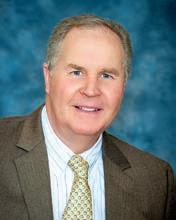
e U.S. Soybean Export Council was presented with the Outstanding Achievement Award at this year’s Industry Dinner. (le to right) Kirk Merritt (OSC), Ed Beaman (USSEC) and Steve Reinhard (OSC)
Preble County joined the OSC in 2001 and the USB in 2010. During this time he’s served in many different leadership roles, including as Chairman, Vice Chairman, Treasurer and Secretary of OSC. He has been a representative to the North Central Soybean Research Program and chair of the OSC’s Research Committee.
At the national level with the USB, Keith has been a member of multiple committees, most recently the Financial Audit Committee. He has traveled overseas to represent U.S. soybean farmers to international customers, and he has served as a media spokesman on production, bioproducts, and sustainability topics
Keith farms nearly 1500 acres of soybeans, corn and wheat.
Jeff Roehm of Highland County has been on the OSA Board of Trustees since 2008. He has served as OSA Vice President and Treasurer, as well as on multiple committees. Jeff is a graduate of the Diesel Technology program at Northwestern College in Lima, Ohio. He is also active as a Highland County Farm Bureau Board Member and is a past participant in American Soybean Association’s Dupont Young Leader Program. u
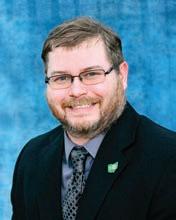
“My soybean checko investment means that farmers are willing to invest in our future. It makes me feel like somebody’s out there putting their best foot forward for me. I can’t be two places at once. I can’t run a farm, raise a crop, reach out globally and prove to people that I grow a great product.”
-WADE MCAFEE, DELAWARE, OH
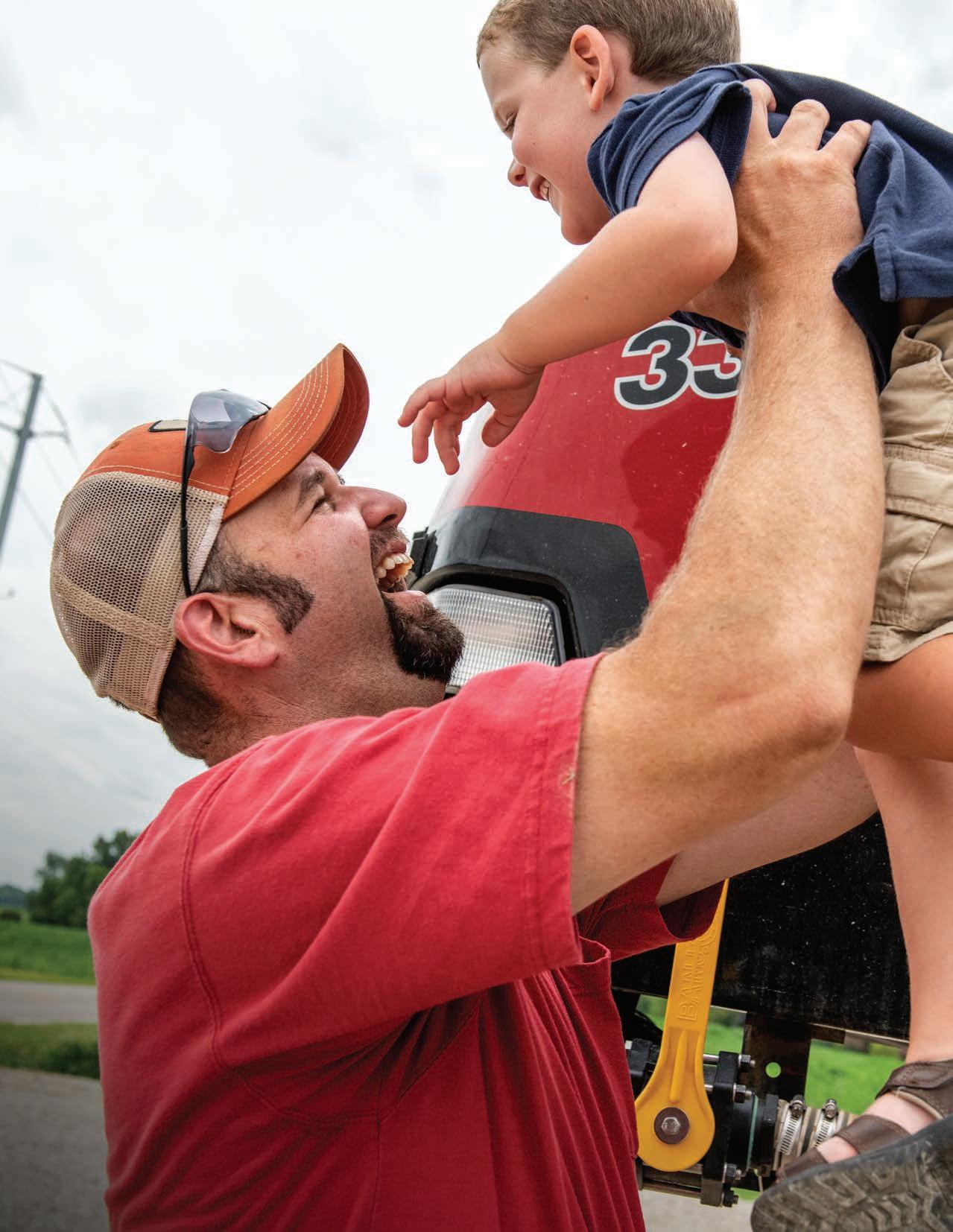
We know you can’t be everywhere at once. By investing in the soybean checko , farmers can concentrate on running their operations while the Ohio Soybean Council works to increase global demand, improve yields and create new opportunities for future generations.
Learn more at SoyOhio.org/HereWeGrow.